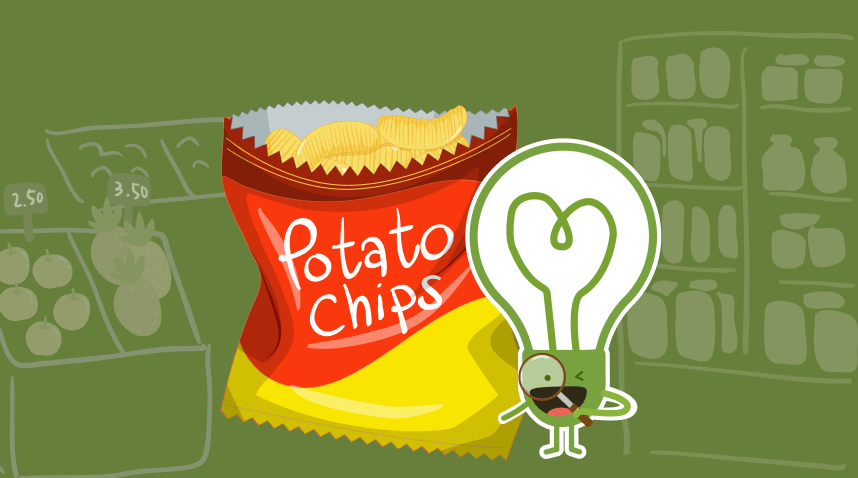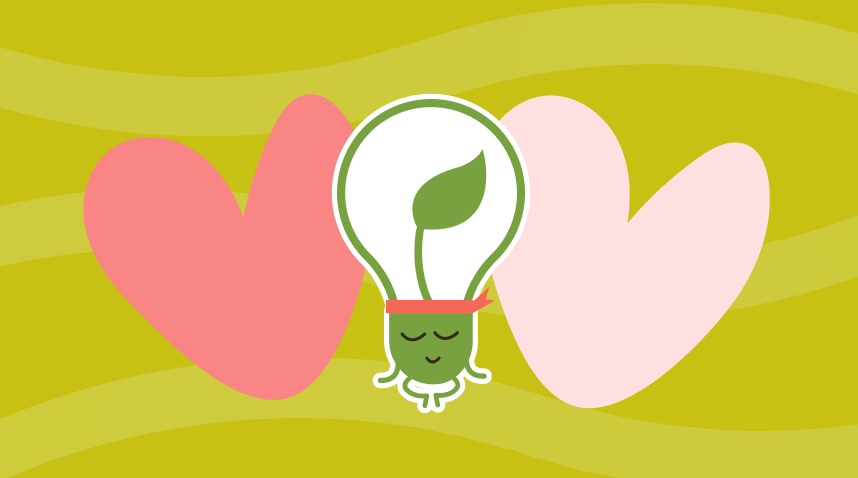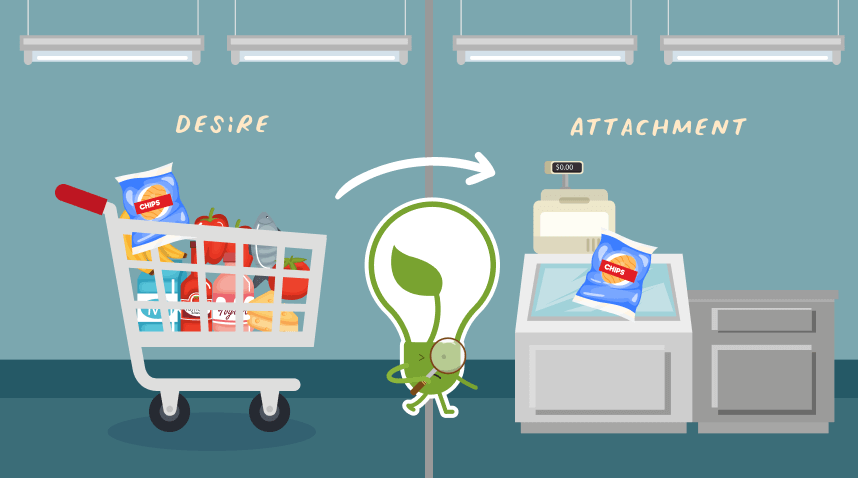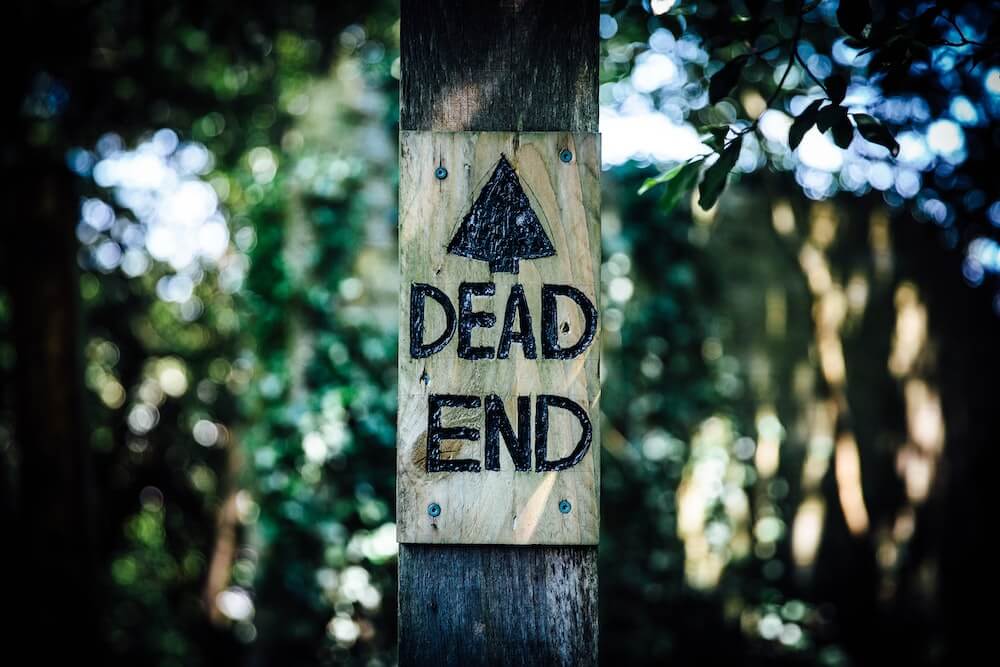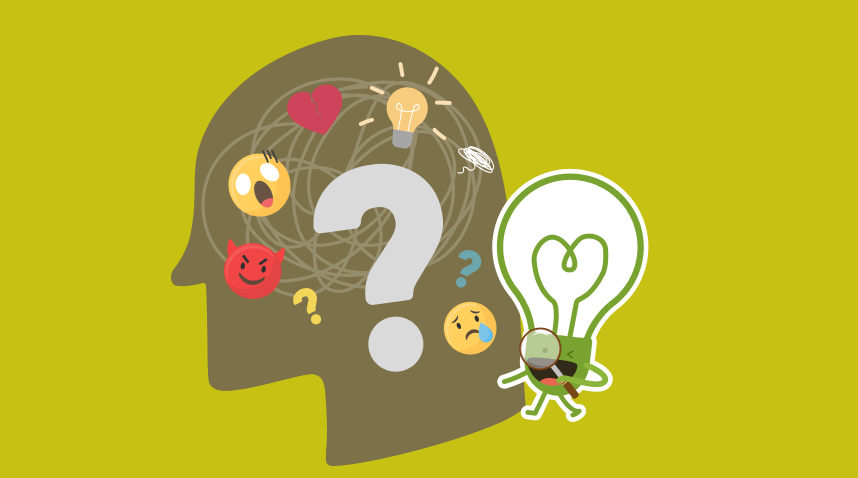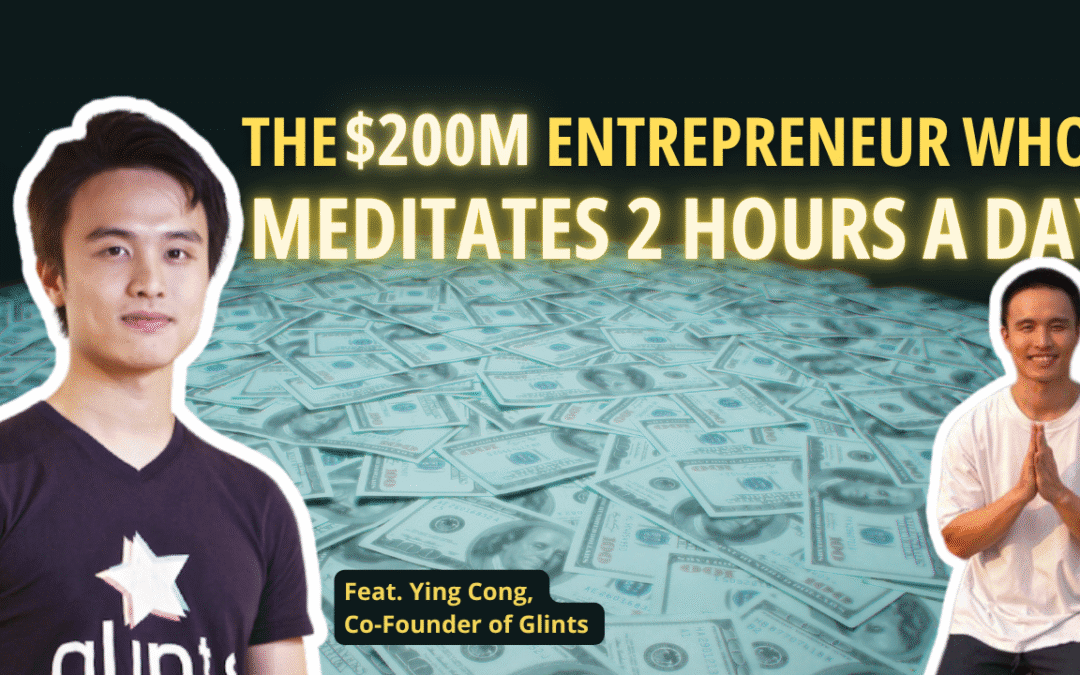
Ep 60: The $200M Entrepreneur Who Meditates 2 Hours a Day ft. Ying Cong
Summary
Startup founder Ying Cong shares his journey of building Glints while applying Buddhist teachings to navigate the intense emotional highs and lows of entrepreneurship. He reflects on lessons in generosity, impermanence, and leadership through real-life challenges like layoffs and PR crises. His story reveals how Dhamma helps reframe success and suffering in business.
About the Speaker
👤 Ying Cong is a long-time meditator and the co-founder of Glints, a leading career platform in Southeast Asia. Over the past decade, he helped scale the company from an idea incubated by JFDI to a regional startup featured in major publications like The Straits Times and Yahoo News. As Glints’ former CTO and current machine learning engineer, he has worked on recommender systems, fraud detection, and data infrastructure—though he jokes that most of it is just “glorified data cleaning.”
His Dhamma journey began in his teenage years and continues to deepen through regular meditation, observing the precepts, and periods of monastic training in the Thai forest tradition. He is quietly exploring how to balance the responsibilities of lay life with the path of practice.
Key Takeaways
Meditation as a Leadership Tool
Regular practice helped Ying Cong stay grounded during stressful moments, including public controversies and internal crises.
The Power of Giving
Practicing generosity, even during financial strain, builds deeper trust and personal growth, dismantling ego-based attachment to money.
Everything is Impermanent
From funding offers to core team members, Ying Cong learns firsthand how clinging leads to suffering—and why letting go brings freedom.
Transcript
Full Transcript
[00:00:00] Ying Cong: Running a startup is like a compressed samsara on steroids because…
[00:00:05] Cheryl: Compressed samsara on steroids is the worst combination.
[00:00:09] Ying Cong: It’s very high, it’s very low.
[00:00:10] Cheryl: The gains and loss.
[00:00:11] Ying Cong: The gains and loss. Correct. Correct. The eight world winds actually shows up very strongly when you’re founder. Grew up as a very frugal and some might say stingy person.
[00:00:21] Ying Cong: Mm. Yeah. I still remember one of my friends… I think one day he just told me, Hey, actually you’re quite kiam siap, a weakness I have to work on, especially coming into contact with Buddhism, they talk a lot about giving, about dana, right? Giving, the joy of giving. And it’s not just about building good karma, it’s also about piercing that ego that you build up and letting it deflate a little bit when you give what is dear to you.
[00:00:50] Cheryl: Welcome to the Handful of Leaves podcast, a Southeast Asian platform sharing Buddhist wisdom for a happier life. My name is Cheryl, the host for today’s podcast, and my guest today is Ying Chong, who is the co-founder of Glints, a recruitment platform that has expanded to eight markets. Today we will be talking about how Ying Cong applies the Buddha’s teachings to grow and build a successful regional business.
[00:01:14] Cheryl: Let’s have Ying Cong introduce himself.
[00:01:17] Ying Cong: Hello. Thank you so much, Cheryl. Hi everyone. My name is Ying Chong. I’m one the co-founder of Glints. I started this company about 11 years ago now. We actually dropped out school to start this internship platform back then, and eventually it grew and right now we are one of the biggest job platforms in Indonesia, primarily.
[00:01:37] Ying Cong: We also have presences in Vietnam, Malaysia, Philippines, and a few other Southeast Asian markets. So for my role at Glints, I started off as a CTO at Glints but eventually I stepped down and I explored different roles within the company. So more recently I ran the Vietnam job marketplace and right now I’m also in charge of the machine learning operations within Glints.
[00:02:01] Ying Cong: As for Dharma, I was exposed quite young, when I was 10 years old. I still remember my uncle told me that you can see your past life if you meditate. So that was a hook and it got me, it got me addicted to this whole journey. And I also ordained as a Samanera for quite a few times when I was…
[00:02:20] Cheryl: what’s a Samanera?
[00:02:21] Ying Cong: Oh, I was a… it was a novice monk. Yeah. So you go there, you follow like 10 rules, 10 precepts and it just a 10 days kind of experience for you. So I did it a few times when I was in primary and secondary school. And then more recently I have been going for meditation retreats as well as pilgrimages with Cheryl actually, quite recently.
[00:02:42] Cheryl: And that’s how we recruited him to come on to today’s episode.
[00:02:45] Ying Cong: That’s right.
[00:02:47] Cheryl: So fast forward to today, Ying Chong was just sharing that he meditates two hours a day. Can you share with us how you… why do you prioritize meditation in your life and yeah, how do you find the time managing such a big business?
[00:03:02] Ying Cong: Yeah, so I was actually inspired on the pilgrimage by our teacher who brought us along — Ajahn Achalo. He is very big about the faith-based, way to approaching Buddhism and as well as making aspirations at the different, Buddhist sites.
[00:03:10] Ying Cong: So one of my aspirations was to continue the daily meditation practice I have but to step it up a little bit even more. So, I gave myself the goal to meditate 600 hours before my next birthday, which is…
[00:03:33] Cheryl: 600 hours. Wow.
[00:03:35] Ying Cong: About two hours per day if you do the math. Yeah. So that’s, that was, that was when I made that aspiration. And it is honestly… it is not easy, right? So for me, I do it a little bit before I go to work, about half an hour, 20 minutes, then one and a half hours after I come back from work. So that is how I try to fit it in. Mm.
[00:03:57] Cheryl: Your commitment and dedication is really inspiring. Could you perhaps share with us a time where meditation has helped you in a very pivotal moment managing Glints?
[00:04:07] Ying Cong: Mm, well, it’s only been a month since I made the aspiration, right? So we shall see. But I’ve been meditating fairly regularly since about five years ago, about halfway through my journey at Glints.
[00:04:20] Ying Cong: And I would say, I mean, it just helped me, like throughout the whole journey, a lot of very stressful moments as well as any good moments, right? You learn not to.. You learn not to attach to them. So there was a very particular… I remember there was a very particular PR crisis that happened to us about three, four years ago.
[00:04:41] Ying Cong: That was actually very, very stressful for the management team and the meditation practice actually helped me just very gently in the background. Right. So, as I explained earlier, we are a cross border hiring platform. So we have portals from different markets. So there was this one particular company, there was an Indonesian company.
[00:05:01] Ying Cong: They were hiring in Indonesia, actually, but they mis-listed their job listing in Singapore. Right. So it showed up in our Singapore portal. A Singaporean candidate applied for it, and this employer thinking that this candidate is not suitable, he just added a very blunt rejection reason. Say, no Singaporeans allowed. He thought it was a, he thought was a rejection reason that only the system can see, but actually we sent it to a candidate.
[00:05:27] Cheryl: Oh no.
[00:05:28] Ying Cong: And you must keep in mind that this was near the general elections period where there was this hot topic of foreign talent, right. And Singaporean is keeping their jobs here.
[00:05:39] Cheryl: That’s such bad timing.
[00:05:40] Ying Cong: Yeah, it was a terrible timing. So this, this candidate was super pissed off. he posted it on Reddit. Mm. And it initially was, it was fine. Like a few employees saw it and they flagged out to the management team. And as a management team, as a startup, you are always stretched, you’re always out of time, out of resources. So initially we didn’t really take it too seriously, right?
[00:06:07] Ying Cong: But then this thread started gaining some traction on Reddit. People started saying, oh, Glints is such a, you know, such a… is funded by Singaporeans right? But why is it not supporting Singaporeans? So this kind of comments started coming up, and eventually our CEO had to address it to the whole company.
[00:06:25] Ying Cong: But then understandably back then when he first addressed in the company he was slightly dismissive about it because you can imagine from his point of view, he’s trying to raise money. He trying to get a company to survive for the next round. And then this thing from Reddit came about. Mm. So he thought, okay, this is like a small thing, right?
[00:06:43] Ying Cong: We can just let it pass. We know that it’s, it is not our fault. Mm. Right. But then it started getting bigger and bigger. The fire started burning, so people started sharing that on their social media, on Facebook, on Instagram, and our employees flag it up to us again, this time with more like, more worry.
[00:07:02] Ying Cong: And I felt like, okay, this summer we really have to address it and address it the right way. So during all hands, I first of all apologized for the management team’s response in the first instance. And then we quickly got together a team to do that, coordinate the whole PR effort. So we contacted the candidate, apologized.
[00:07:22] Ying Cong: We also put out a statement. It was like a whole overnight thing that we did. And eventually it managed to get resolved. Mm. Right. But then, my reflection learning from the whole experience was that, you know, when you are running a company, a lot of things that happen to your company, you feel like it’s not your fault.
[00:07:40] Ying Cong: Mm. But you really do have to address it. You can’t ignore it. And a very short while later, when I reflect on this whole incident, I realized, oh, actually it’s a little bit like meditation. Hmm. Where, you know, sometimes a little bit of suffering comes up or some craving comes up. Right. And my tendency is to ignore it.
[00:07:58] Ying Cong: Mm-hmm. Like to look away from that suffering. But then when you look away then the suffering can still proliferate. Mm, yeah. So that was like a very interesting analogy that I saw from this incident where, oh, you have to sort of look straight at it, don’t flinch away, and then sort of address it in the wisest way you think is possible.
[00:08:18] Cheryl: It reminds me of the very famous quote, whatever you resist, will just keep persisting.
[00:08:23] Ying Cong: Yeah. Yes, yes, yes. Whatever you resist, persist, right? Mm. Yeah. Is exactly the same.
[00:08:27] Cheryl: And that’s what meditation helps us with, right? To really train our attention to go to the root cause of our suffering. Correct. And then finding the right way to address it.
[00:08:37] Ying Cong: Exactly. Exactly. Exactly. So it applies internally and in a company setting, it also applies externally to a bigger group of people. Yeah.
[00:08:45] Cheryl: So I’m curious. After, after the whole PR crisis. How, I guess, how has your company rebuilt its reputation?
[00:08:55] Ying Cong: Hmm. So that’s the tricky thing about reputation. It, it gets… it takes a long time to build and just a day to get destroyed. And thankfully we contained the situation. Mm-hmm. It didn’t go too far beyond those few people who were posting on social media and then the Reddit, the poster eventually agreed to take it down. Mm-hmm.
[00:09:16] Ying Cong: So that was contained, but within those people who knew about it, I mean, you then have to spend the next few years doing the right thing to rebuild it again. Mm-hmm. Yeah. So. That is the hard truth about reputation. Yeah.
[00:09:28] Cheryl: Yeah. So easy to just break apart. Exactly. Exactly. And it takes years to build trust. Yeah.
[00:09:34] Ying Cong: Takes years to build. Yeah. Yeah. Yeah.
[00:09:35] Cheryl: So I’ve come across your writings in the Handful of Leaves platform. Mm-hmm. And something very interesting that came up to me was the concept of giving.
[00:09:44] Ying Cong: Ah, yes. Yeah.
[00:09:45] Cheryl: You mentioned that, you know, givers experience the most joy. Yeah. And that’s almost counterintuitive in our normal corporate world today, where everyone’s about taking, getting ahead. Maybe you can share a personal story where choosing selfless giving in your business actually benefited you and your team.
[00:10:02] Ying Cong: Hmm. The reason why I picked that topic to write about in Handful of Leaves is because I grew up as a very frugal and some might say stingy person. Yeah. I still remember one of my friends, one day he just told me, “Hey, actually you’re quite kiam siap”. So I realized that was a weakness I have to work on, especially coming into contact with Buddhism.
[00:10:26] Ying Cong: They talk a lot about giving, about dana, right? Giving, the joy of giving, and it’s not just about building good karma, it’s also about piercing the ego that you build up and letting it deflate a little bit when you give what is dear to you. So, it is a really a lesson that I have to learn the hard way.
[00:10:43] Ying Cong: And Glints, I mean, in the beginning, I have to be honest, when I started this company, one of the big goals for me was financial freedom. Mm-hmm. Right? To build up a base of financial freedom for myself. But then we really quickly realized that if you want to build something meaningful and big and impactful, you need people to jump on board together with you. And for that to happen, you have to give. People who won’t work for someone who is not gonna give to them. Mm-hmm. Right? So that is just the basics of human relationship. I still remember it very clearly, this one incident during the COVID period.
[00:11:24] Ying Cong: This was the early period COVID, early 2020s, where people didn’t know what was gonna happen to the economy and everyone just froze up. Like the whole economy just froze up. Everybody stopped hiring. Mm. And we are a recruitment platform, so when people stop hiring, our businesses dried up and we very, very quickly realized we have to cut down our cost in order to survive.
[00:11:48] Ying Cong: So there was this very dreadful meeting, like I still remember where basically the whole management team sat down together. We say we had to cut our costs by this much. The biggest cost in most companies is the labor. Yep. Right? So we have this whole spreadsheet of everybody’s names and their salaries beside them.
[00:12:00] Cheryl: Oh, that gives me the jitters, because I have been through a layoff before and what he’s saying is scary.
[00:12:06] Ying Cong: Oh yes. Oh yeah, yeah. HR, right? So yes, HR was at the table too. Yeah. So basically we had to… each leader has to commit to cutting a certain amount of costs from their team and like basically letting go a certain number of team members from their team. Yeah. So me, I was running the engineering team back then as a CTO and also product and design.
[00:12:27] Ying Cong: So I also had to commit to a number of cuts. And there was this one designer, he was our designer lead back at the time, and he was one of our very early designers who really helped us in the beginning. But unfortunately part of that decision I had to let him go. And I remember I did a call with him.
[00:12:44] Ying Cong: He was based in the Philippines. It was a Zoom call and I told him the situation, right? And I say, we have to, you know, let you go. And at that moment he started crying. Mm, yeah, he started crying. He was very scared and very sad. And he told me that he, yeah, he has a new baby coming along the way, and maybe because of this situation, he has to move back to his hometown away from Manila, where the costs are lower.
[00:13:11] Ying Cong: And at that moment I didn’t know what to say. Right. So we ended a call very awkwardly back then. I said, yeah, I mean, sorry that this has to happen, but yeah. Sorry about this. And I ended the call. And then after I ended the call, there was a moment that I wanted to, you know, revert the decision and say, okay, we can keep you, right.
[00:13:32] Ying Cong: But then imagine, right, I already made a promise to my management team. We had that call, everyone has already made that decision, right? So it’s like a decision that we have to go through and it’s about how you can make it as easy as possible for this person. So, you know, we have a few conversations after that and eventually he agreed to go, but he also asked for an extra month of severance.
[00:13:56] Ying Cong: And then, as you know, in HR and also in our management team, they teach you never to give exceptions in this kind of situations to any employees because they will incur like unfairness and resentment in everyone else. So it’s a very difficult situation and I thought very long and hard about it. And I also meditated on it a little bit.
[00:14:13] Ying Cong: Eventually I decided to give him, but out of my own salary, right? So I told him, okay, I’ll give yeah, this one month, I understand your situation. But this, it is a personal favor, right? It’s not, it is not a company policy, right? And he said, yeah, thank you so much. I know it’s very hard, but it’s hard for all of us.
[00:14:32] Ying Cong: So eventually we parted on good terms and he managed to do well for himself. And actually a few years later he did rejoin us for a while as a designer again. Yeah. So that was very hard for me. Back then, I was so tight on money. We all took pay cuts as founders too. And for me, when growing up, money was a very scarce resource in my family.
[00:14:53] Ying Cong: So it was like a… it’s like a thing for me, like, to give up money. And so that was a difficult situation. Yeah. But eventually when I did that, I also instantly just felt more relieved. Yeah. For some reason I just felt relieved. I felt I did the right thing.
[00:15:08] Cheryl: Mm.
[00:15:08] Ying Cong: Yeah.
[00:15:08] Cheryl: What do you think you let go of from being someone who’s kiam siap –yeah, right, holding on tightly to the money — to taking out portion of your income when times are tough for you as well. What do you let go of?
[00:15:20] Ying Cong: Hmm. So one thing I realized is that money is a story that we tell ourselves, right? Back then when I was young, I thought it was a resource that we owned. But actually beyond being able to sustain, feed yourself, feed your family, have a place to stay, it is a story that we tell ourselves.
[00:15:37] Ying Cong: So the story I was telling is that money represented how well I doing, how safe I feel in life, how much status I have. Right? There was a story I told myself at the beginning of Glints. Then I have to let it go. Right. Still had to let it go.
[00:15:51] Ying Cong: I started to see, okay, that actually that’s not true. Right. You can, you save in other ways and then sometimes, yeah, people don’t really ask you how much you have in your bank account. It’s not like you’re gonna stop next month also right, for a lot of us.
[00:16:05] Ying Cong: So I began to let go of the story and when you let go the story, then things like this become easier. Oh, this is a story. I can, yeah, it’s fine if I give like a portion of my salary. Right. It’s fine. Yeah.
[00:16:16] Cheryl: Oh, that’s really beautiful.
[00:16:19] Ying Cong: Thank you.
[00:16:19] Cheryl: And initially you also shared that when you wanted to create something meaningful, you have to bring people on board. Yes. And that’s by giving? Yes. So what does “meaning” mean to you now? After this 11 years journey with Glints and… 11 years and ongoing.
[00:16:37] Ying Cong: Oh yeah. And ongoing. It never ends. It’s like Samsara.
[00:16:40] Cheryl: Oh no.
[00:16:42] Ying Cong: Yeah. Oh yes. Okay. So that has been a huge transformation for me. I always joke with my co-founder because he’s also a Buddhist. Ah, yeah. And I joke with him that running a startup is like a compressed samsara on steroids because…
[00:17:00] Cheryl: Compressed samsara on steroids, that’s the worst combination.
[00:17:03] Ying Cong: …there’s so much pain and pleasure and it’s very high, it’s very low.
[00:17:07] Cheryl: The gains and loss.
[00:17:08] Ying Cong: The gains and loss. Correct, correct. The eight worldly winds actually shows up very strongly when you’re founder.
[00:17:14] Ying Cong: Mm. And people join you, but people also leave, and this also happens on a very compressed timeline. So in the beginning, when I first started Glints, what it meant for me partly was what I mentioned earlier, right? The financial stability, the financial freedom it can grant me. Mm. And of course I have dreams of becoming someone of status within the tech community.
[00:17:38] Ying Cong: So that was my initial founding motivation. Not the noblest or brightest, but that was honestly how I started. And then very quickly you realize, okay, those things, first of all, they don’t come that easily. Mm. Right. And even if they came, they also go away quite quickly. Mm. Right. I remember when we were running the business, we bootstrapped it for the first few years, and then all of a sudden there was this CIO from a competitor firm, I shan’t name, but they are a much bigger firm in our space. And then they, he came…
[00:18:07] Cheryl: Was it blue?
[00:18:11] Ying Cong: (laughing) So yes, he came and he basically had a few conversations with us, coffee chats. Mm-hmm. And then suddenly at the end of those coffee chats, he asked, you know, you guys seem to be doing something quite promising. What if I give you a few million dollars, like two or $3 million?
[00:18:27] Ying Cong: And then, you know, back then we were so poor, right? So my co-founder kicked me under the table and was like, yeah, don’t say anything.
[00:18:34] Cheryl: Go for it!
[00:18:35] Ying Cong: And then , we tried to hold ourselves and be serious, right? But after he left, we just like, whoa, banging the wall. Okay. We made it. wow, that’s the most money that we ever seen in our whole life.
[00:18:48] Cheryl: And that’s the ultimate success in the startup world, right? Yeah. Bought out by someone else.
[00:18:51] Ying Cong: Correct. Correct. Correct. Yeah. And then we were so happy we thought we made it. And then at the next meeting he ghosted to us. That’s why I didn’t wanna name the company. He ghosted to us. He didn’t reply our calls. He didn’t show up anymore for our meeting. And that was it. Just like that. Oh, so…
[00:19:12] Cheryl: Wow. Your hopes are just dashed.
[00:19:13] Ying Cong: Yeah, just dashed immediately. Ah, yeah. So in that few… and this all happened over one week. Yeah. So in that one week we saw that whole… this whole thing, right? Where you had this gain that you thought you had, and then it was immediately lost and it was just so painful and it’s so obvious to me, how fickle all these things were.
[00:19:30] Ying Cong: Mm. Right. So that was in the beginning, right? So it was about fame, a little bit of money. But then eventually I started to build a team and I started building very strong relationships with the team. And at that point in time, this is about like four, five years in, right?
[00:19:44] Ying Cong: I thought, okay, because maybe this, the startup is about the relationships that you built along with you, the people around you. And I started forming very strong, close relationship. I treated them like family almost. Mm. So, that was my middle phase. And then eventually I realized no matter how well you treat people, eventually they will still leave.
[00:20:05] Ying Cong: Mm-hmm. Yeah. They’ll leave your company, and for different reasons. Right. Sometimes it’s mistakes that you made as a manager sometimes because the company’s not going the direction they want, you’re not providing the growth they need, and sometimes it’s just impermanence. Mm-hmm. They just need to leave because they have been here for too long.
[00:20:21] Ying Cong: Yeah. And when, at first, when a few of these core members started leaving, I felt very impacted. Because this was my family. Mm-hmm. And this was the meaning of why I was building this startup. Mm. But then I realized, okay, maybe this what the Buddha meant. Mm. Even the most… with the noblest of intentions, with the biggest of efforts, things that you treasure will still leave you.
[00:20:42] Ying Cong: Mm. And this was the case in the middle phase. I realized, ah, eventually, eventually, all of the core team that I build up in that phase after three to four to five years, all of them left. All of them left except for the few founders, and new people came in.
[00:20:57] Ying Cong: And I realised, okay, well this, I thought this was a very… higher level of meaning, right? Compared to money to the fame, but even this was impermanent. Even this was impermanent. And now I’m into the third phase now where I see everything just changing. Mm-hmm. And you do your best in that situation. There are some things that are still durable in a business. Right. Like your customer relationships, like your brand reputation, that last longer in the context of a human lifetime.
[00:21:23] Ying Cong: Mm-hmm. But you have to keep reminding — eventually they will still fade away. Right. So you try to do this in a way to develop yourself. Also, you treat it as a vehicle to develop your giving. For me it was part of that your sort of impact to the world. Right. So it’s more like a training and those kind of qualities, they tend to stay with you longer than money, than people. Yeah.
[00:21:46] Cheryl: This really reminds me of the sutta, the noble and ignoble search sutta where the Buddha say, why bother — i’m not quoting like exactly, but — why bother searching for things that are liable to break down, liable to, you know, impermanence. Yeah. Why not search for things that, you know, go beyond the deathless, go beyond the cycle of Samsara, the deathless.
[00:22:10] Ying Cong: Correct, correct, correct, correct, correct. That was, that was actually, yeah, it took many years of pain to actually see what the Buddha is talking about in that sutta, right. In the beginning, I was exposed to Dhamma and I did it firstly for the past life psychic power. And then in the middle it was like, maybe the jhanas are very nice and samadhi is very nice and can maybe help you with your worldly life.
[00:22:35] Ying Cong: Right? With my school, with concentration. And then you start to experience all this, like you really just put your best effort and try to hold things right, like people, and they still leave and you’re, oh, okay, yeah, maybe there was something else. Yeah. And I think that’s what the Buddha was pointing to.
[00:22:51] Cheryl: That’s where you start to develop the wisdom to see things as they are. That’s really nothing that can be satisfactory in things that are just liable to change and break down.
[00:22:59] Ying Cong: Exactly. Exactly. And there’s this phase where I was actually quite burnt out. I was quite burnt out. I didn’t know why , I was just feeling a bit down. And I realized it because, you know, life just doesn’t give you what you want.
[00:23:17] Cheryl: And the problem with it is we delude ourselves into finding different objects and hoping the same thing, that it won’t change.
[00:23:24] Ying Cong: Yes, yes, yes. But after a while we see the pattern.
[00:23:26] Cheryl: Yeah. Then like, ah, shit, the Buddha is still the genius.
[00:23:29] Ying Cong: There’s no running out of this samsara. Yeah. There’s no getting permanent satisfaction.
[00:23:34] Ying Cong: Yeah.
[00:23:35] Cheryl: But yes, saddhu. I really loved how you find meaning now, which is to find a way to treat everything that you experience as a way to develop and train yourself. Yeah. Yeah. Which is much more lasting and beneficial for you as well.
[00:23:48] Ying Cong: Yes, yes.
Resources:
Ying Cong’s article on giving: https://handfulofleaves.life/how-seeking-to-balance-everything-nearly-cost-me-my-relationship/
Special thanks to our sponsors:
Buddhist Youth Network, Lim Soon Kiat, Alvin Chan, Tan Key Seng, Soh Hwee Hoon, Geraldine Tay, Venerable You Guang, Wilson Ng, Diga, Joyce, Tan Jia Yee, Joanne, Suñña, Shuo Mei, Arif, Bernice, Wee Teck, Andrew Yam, Kan Rong Hui, Wei Li Quek, Shirley Shen, Ezra, Joanne Chan, Hsien Li Siaw, Gillian Ang, Wang Shiow Mei, Ong Chye Chye, Melvin, Yoke Kuen, Nai Kai Lee, Amelia Toh, Hannah Law, Shin Hui Chong
Editor of this episode:
Aparajita Ghose
Website: aparajitayoga.com
Transcriber of this episode:
Tan Si Jing, Bernice Bay
Visual and Sound Effects
Anton Thorne, Tan Pei Shan, Ang You Shan

